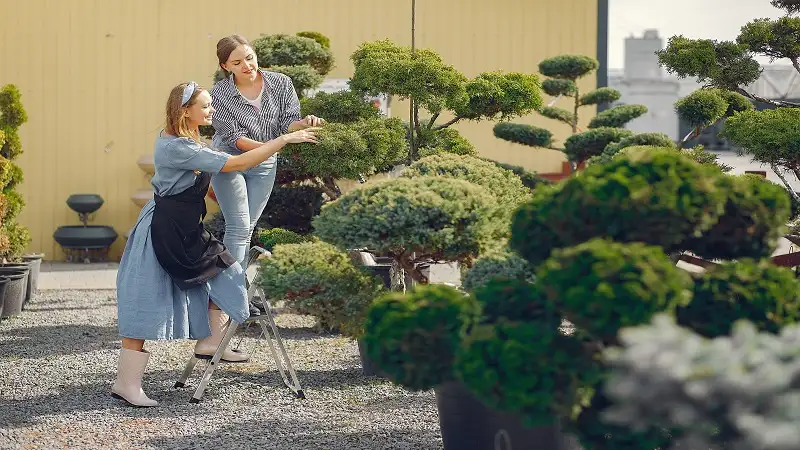Trees are one of the most powerful elements in landscaping and home design. They provide shade, improve air quality, add aesthetic beauty, and even increase the value of your property. Whether you have a small backyard or a large garden, the right trees can completely transform your outdoor spaces, making them more inviting, functional, and visually stunning.
In this article, we’ll explore how trees enhance outdoor spaces, which types work best in different settings, and tips for planting and maintenance to maximize their benefits.
Why Trees Are Essential for Outdoor Spaces
Trees are more than just decorative elements—they serve multiple practical and environmental purposes.
Key Benefits:
- Shade and Cooling: Trees provide natural shade, reducing temperatures in patios, gardens, and homes during hot weather.
- Air Quality Improvement: Trees absorb carbon dioxide and release oxygen, contributing to a healthier environment.
- Noise Reduction: Dense tree foliage can act as a sound barrier, minimizing noise from roads or neighbors.
- Privacy and Screening: Tall or strategically planted trees create privacy screens and define outdoor spaces.
Adding trees to your outdoor areas enhances both the functionality and aesthetic appeal of your property.
Choosing the Right Trees for Your Outdoor Space
Selecting the appropriate tree species is crucial to ensure they thrive and enhance your landscape.
Factors to Consider:
- Climate: Choose trees that are suited to your local weather conditions and soil type.
- Size at Maturity: Consider how tall and wide the tree will grow to avoid overcrowding.
- Purpose: Decide whether the tree is primarily for shade, decoration, privacy, or fruit.
- Maintenance: Some trees require more care, pruning, and watering than others.
Popular choices include maples, oaks, dogwoods, magnolias, and fruit-bearing trees like apple or cherry trees.
How Trees Improve Curb Appeal
Trees significantly influence the first impression of your home. A well-landscaped yard with healthy trees makes your property look attractive and inviting.
Key Points:
- Focal Points: Trees with striking shapes, colors, or blooms can act as focal points in your garden.
- Complementing Architecture: Trees can frame your house, highlighting architectural features.
- Seasonal Interest: Deciduous trees offer seasonal changes with flowers in spring, lush leaves in summer, and colorful foliage in fall.
A property with carefully placed trees appears more cared for, enhancing both curb appeal and property value.
Trees That Create Outdoor Living Spaces
Trees can be used to design functional outdoor areas that feel like extensions of your home.
Ideas:
- Shade for Patios and Decks: Large canopy trees like oaks or maples create natural shade, reducing the need for umbrellas or pergolas.
- Garden Rooms: Tall trees with dense foliage can divide your garden into “rooms” for seating, dining, or play areas.
- Natural Play Areas: Trees provide a natural setting for swings, treehouses, or shaded play zones for kids.
Using trees strategically turns ordinary yards into livable, usable, and beautiful spaces.
Trees for Privacy and Screening
Privacy is a major concern for many homeowners. Trees offer an attractive alternative to fences and walls.
Effective Tree Options:
- Evergreens: Pines, spruces, and cedars retain foliage year-round for continuous privacy.
- Bamboo: Fast-growing and dense, perfect for narrow spaces.
- Columnar Trees: Italian cypress or hornbeam creates a tall, narrow screen ideal for small yards.
Trees not only block unwanted views but also provide sound insulation and windbreaks, enhancing comfort in your outdoor spaces.
Incorporating Fruit-Bearing Trees
Fruit trees combine beauty and functionality. They enhance the landscape while offering fresh produce.
Popular Choices:
- Apple Trees: Lovely spring blossoms and edible fruit in late summer or fall.
- Citrus Trees: Oranges, lemons, and limes add fragrance, color, and freshness.
- Cherry Trees: Stunning spring flowers with small edible fruit.
Fruit-bearing trees encourage outdoor living and seasonal interaction with your garden. They also add unique character and can be a conversation starter for guests.
Trees That Support Wildlife
Planting trees can create a small ecosystem, attracting birds, butterflies, and beneficial insects.
Tips:
- Native Species: Choose trees native to your region for better growth and to support local wildlife.
- Flowering Trees: Trees like dogwood, cherry, and redbud attract pollinators.
- Fruit-Bearing Trees: Provide food sources for birds and small animals.
Integrating wildlife-friendly trees adds life, color, and movement to your outdoor spaces, making them more vibrant and engaging.
Proper Planting and Maintenance
To ensure your trees thrive and enhance your landscape, proper planting and care are essential.
Steps:
- Planting Location: Consider sunlight, soil type, and space for growth.
- Watering: Newly planted trees require consistent watering until they establish strong roots.
- Mulching: Helps retain soil moisture and regulate temperature.
- Pruning: Regular pruning removes dead or diseased branches and maintains shape.
- Fertilizing: Nutrients may be necessary depending on soil quality.
Proper maintenance maximizes the health, beauty, and longevity of your trees.
Seasonal Planning with Trees
Trees can offer year-round benefits if you plan with seasons in mind.
Suggestions:
- Spring: Choose flowering trees for vibrant colors.
- Summer: Opt for leafy trees that provide ample shade.
- Fall: Select trees with colorful foliage to enhance aesthetics.
- Winter: Evergreens keep your garden lively when other trees lose leaves.
Seasonal planning ensures that your outdoor space is always attractive and functional throughout the year.
Combining Trees with Other Landscaping Elements
Trees work best when integrated with other landscaping features.
Ideas:
- Shrubs and Flower Beds: Surround trees with colorful plants to enhance visual appeal.
- Paths and Walkways: Use trees to frame paths, creating inviting garden walks.
- Lighting: Spotlights and fairy lights on trees add drama and nighttime beauty.
- Water Features: Trees near ponds, fountains, or pools create natural harmony.
Combining trees with other elements transforms your yard into a cohesive, inviting, and multifunctional outdoor space.
Conclusion
Trees are not just plants—they are essential elements that transform outdoor spaces. From providing shade, privacy, and wildlife habitat to enhancing curb appeal and outdoor living, the right trees can completely redefine your garden or backyard.
By carefully selecting the right species, planning their placement, maintaining them properly, and integrating them with other landscaping features, homeowners can create a beautiful, functional, and dynamic outdoor environment. Whether you want a peaceful retreat, a play area for children, or a space that impresses guests, trees are a natural solution that brings life, beauty, and value to any property.

